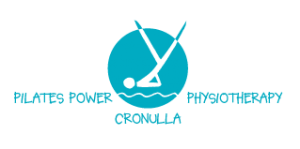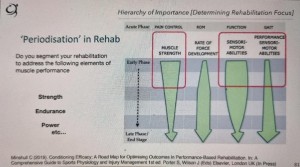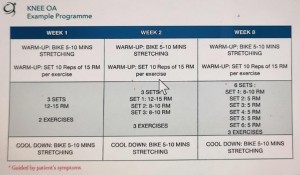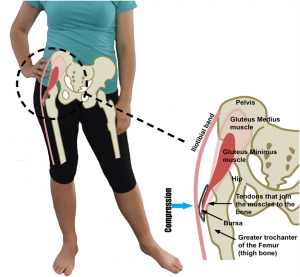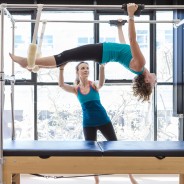Blog
SCOLIOSIS AND EXERCISES
What is Scoliosis?
Scoliosis is an abnormal curvature of the spine. While t looks like a curve towards one side it is a 3-dimensional curve. Most often scoliosis is diagnosed in childhood or early adolescence. Scoliosis can be classified by aetiology: idiopathic, congenital, neuromuscular, and structural.
80% of all scoliosis cases are idiopathic, which means there is no known cause.
Who should engage in specific Scoliosis Exercises?
Scoliosis exercises should be considered by everyone with this condition wherever they are in their journey as curves may progress when aging and frequently cause chronic pain along the way.
The severity of your scoliosis is measured by the Cobb angle on an X-ray. From a 10-degree Cobb angle onwards it is recommended to engage in specific exercises. From 40-49 degrees it is recommended to wear a brace when you still have some growing to do (adolescent). From 50 degree onwards surgery is considered. However, any scoliosis at any stage will benefit from exercises to reduce muscular pain and increase lung and heart function.
PPP will be able to assist you on the journey to a stronger you!
Why specific exercises for your scoliosis?
Specific Exercises for moderate to severe scoliosis are a nonsurgical option to manage the health of vital organs affected by scoliosis. The exercises are customized for returning your curved spine to a more natural position.
The goal of these specific exercises is to de-rotate, elongate and stabilize your spine in a three-dimensional plane.
What type of exercises are right for your scoliosis?
The spine rotation in scoliosis is different in each person. Scoliosis specific exercises are tailored to your unique curvature of the spine. These exercises can be performed while standing, sitting, or lying down. Props such as wedges or small balls can also be used to assist in correcting scoliosis.
Scoliosis exercises, although different from person to person, include three important components:
1) Muscular Symmetry
The changes in the curvature of your spine also affect the muscles in your back. On one side of the back the muscles may weaken and waste away. On the other side, the muscles may be overworked and prominent.
Scoliosis specific exercises are designed to address both problems, aiming to achieve muscular symmetry.
2) Rotational Angular Breathing
In these specific exercises a special breathing technique called rotational angular breathing is used. The idea is to rotate the spine with breathing to help reshape the rib cage and surrounding soft tissue.
3) Awareness of Your Posture
Mirrors help develop awareness of posture. Being aware of the position of your spine is the first step to correcting it. Postural awareness is especially important when it comes to activities of daily living. If you have scoliosis, you will always need to be mindful of the positions that may make it worse.
What results can be expected from a specific scoliosis exercise program?
Most patients see visible improvement in the degree of their spine curvature after completing a specific exercise program. The length of the program may vary.
At PPP Cronulla, our sessions typically last from 45 minutes to an hour. The length and frequency largely depend on the patient’s tolerance and the extent of the scoliosis.
20 sessions are recommended to continue to self-manage independently thereafter.
Besides the correction of the curve, outcomes of a scoliosis specific exercises may include:
- Improved posture
- Improved core stability and strength
- Easier breathing
- Less pain
- Improved overall movement pattern and function
- Improved self-management and understanding of the spine
- Better pelvis alignment
The main goal of exercising specifically is to prevent the scoliosis from advancing.
However, a long-term commitment to specific exercises and guidelines is necessary to make this treatment successful.
Please talk to Physios or reception staff at PPP Cronulla and make an appointment today for yourself or your child!
Email: info@pppcronulla.com.au
* * * * *
WHAT PAIN SHOULD I BE WORRIED ABOUT AND WHEN IS PAIN OK?
At PPP we assess and treat pain every day. In this Blog we discuss what type of pain you should be worried about and when pain is normal or OK!
No-one really wants pain: once you have it you want to get rid of it. This is understandable because pain is unpleasant. But the unpleasantness of pain is the very thing that makes it so effective and an essential part of life, it alerts you to danger, often before you are injured badly. It makes you move differently, think differently, which also makes it vital for healing.
Occasionally the pain system appears to act oddly – like the scratch you don’t feel until you see the blood at the injury site. Other times the pain system fails – some life-threatening cancers are not painful, which is the reason they can go undetected and can be so nasty.
We believe that all pain experiences are a normal, though unpleasant, response to what your brain judges to be a threatening situation. We believe that even if problems do exist in your joints, muscles, ligaments, nerves, immune system or anywhere else, it may not hurt if your brain thinks you are not in danger. In the exact way if no problems whatsoever exist in your body tissues, nerves, or immune system, it will still hurt if your brain thinks you are in danger.
A little trivia: people around the world consume more than 100 billion aspirin tablets per year. If you put them all in line, the line would be 1 million km long (that’s to the moon and back). Maybe we need to understand pain better and not rely on medication only?
Explain Pain (David Butler and Lorimer Moseley) is a great resource if you want to dive into this topic more. It is available in our PPP library!
Talk to our PPP Physios if you have any questions!
We would like to tell you more about what information pain gives you:
Is there such a thing than good pain?
YES!
The most common form of “good pain” is the delayed onset muscle soreness (DOMS). If you challenge your muscle with something unusual or simply more than usual, you will experience pain 1-2 days later and the used area will be sore to touch or use. However, the soreness will go away quickly and there is no residual pain. You could also experience the good pain after a physio or massage therapist release a trigger point in a muscle or a tight area. It should improve after a few days with no residual pain.
What, then, is bad pain?
Bad pain keeps you up at night or has very high pain rating. Physios use the 0-10 visual analogue scale to quantify the intensity of your pain. Bad pain is an injury!
Continuing to exercise when injured will not allow you to push through to reach your goals, you need to seek a recovery plan and consult with your physio.
Bad pain comes in many forms, impacting on our muscles, joints, tensons, ligaments or nerves. The pain is generally sharp (occasionally shooting) and sudden or high in intensity (more than 5/10 on the pain scale 0-10). It also persists past a few days or increases. Hence further investigation and treatment is required by your physio.
Let us help you with the bad pain! If you have pain lasting more than 24 hours, if it is intense and lingering past 3 days or if simply you are not sure, give us a call or chat with us!
* * * * *
FUNCTIONAL STRENGTH TRAINING AT PPP
Sometimes ‘treatment’ of the offending muscles or joints is not enough and strengthening/corrective exercises are recommended or prescribed by your physiotherapist.
At PPP we personally guide your rehabilitation and optimise this treatment approach for you.
Functional strength classes (4-8 clients per class) are offered multiple times a week at set times. Please visit our website “Class Timetable”.
What exactly are Functional Strength classes at PPP?
- Functional Strength training is a resistance training program designed by PPP physiotherapists.
- It is a biomechanically balanced, full-body training program designed to develop a strong, toned, energised body which moves with ease, efficiency, and control.
What should I expect from a Functional Strength class?
- Our physiotherapists teach a series of full body movements over the course of weeks/months; coaching and challenging you to execute these movements with correct technique and with increasing difficulty.
- Exercises are performed with handheld weights like dumbbells and/or with resistance band tubing, allowing you to continue training in your own home. Exercises can also be trained extensively in a gym.
I already go to the gym, I practice strengthening exercises, why should I practice Functional Strength training?
- Often pain and injuries occur due to a biomechanical weakness or imbalance which a regular strength program is unlikely to address. Our functional strength training is a biomechanically balanced resistance training program, complex in nature, incorporating multi-directional movements requiring balance and co-ordination.
- If we train functionally, correct and maintain biomechanical balance, we help to manage and prevent injury.
I’m not fit, I don’t exercise and I’ve never been to a gym!
- All exercises are customised to your individual level. Our physiotherapists at PPP take your current abilities into consideration and tailor your program to suit.
- We don’t all need to bench press 100kg, (in fact no one needs to!). Strength training can be undertaken simply to help one climb the stairs to their front door without pain.
I have sore knees … I seem to always get pain when I exercise!
- Pain can often be experienced because the body is not functioning correctly. An imbalance of tight and weak muscles can place a lot of stress on joints as they move.
- Physiotherapists at PPP modify your movements to avoid, as well as reduce pain. Our clients often leave their training session with lessened and sometimes without, the pain they might have been experiencing when they arrived!
How does PPP Functional Strength training differ from regular strength training?
- Traditional strength training is generally performed with a focus on individual muscles, for example the bicep curl or the knee extension. Functional strength training differs in that it involves whole body exercises, movement is not limited to one joint, (such as the elbow or the knee) at a time.
- We often rely on the use of external supports when we exercise traditionally in a gym setting; we’ll sit on a seat or use a bench to provide a stable base. Functional strength training relies on internal stability. This approach challenges the body to create our own balance and in doing so we get stronger, as well as improve our stability.
- Functional strength training mimics or supports activities we perform on a daily basis and with our sporting endeavours. By practicing these movements with correct form and technique, we can improve our potential to perform them.
NEW CLIENTS ARE WELCOME, HOWEVER, WE DO REQUIRE AN INITIAL CONSULTATION TO ALLOW US TO FULLY UNDERSTAND YOUR BODY AND GOALS.
EXISTING PPP CLIENTS ARE ABLE TO JOIN THIS CLASS AT ANY TIME!
One of our friendly reception staff can book you into a FS Class, or have a chat with one of our physios: Barbara, Karina, Nikki or Thomas
* * * * *
STRENGTH TRAINING IN REHABILITATION
Designing Strength based rehabilitation
 When starting to design your strength program from a rehabilitation point of view -post injury, surgery and/or deconditioning for any reason – you have to observe – above all – the safety and the good technique. What happens when you fatigue, and form goes out the window? Or, on the flip side, what if an exercise has become too easy? We understand that no one wants to put themselves in harm’s way by doing an exercise incorrectly or waste their time on an exercise program that won’t achieve their goals. You may be faced with altering the strength training initially!
When starting to design your strength program from a rehabilitation point of view -post injury, surgery and/or deconditioning for any reason – you have to observe – above all – the safety and the good technique. What happens when you fatigue, and form goes out the window? Or, on the flip side, what if an exercise has become too easy? We understand that no one wants to put themselves in harm’s way by doing an exercise incorrectly or waste their time on an exercise program that won’t achieve their goals. You may be faced with altering the strength training initially!
These adaptations are exactly what our highly trained and experienced instructors/ physios at Pilates Power and Physiotherapy Cronulla are trained to do - straight from their exercise toolbox!!
Regression = an approach to decrease the demand of an exercise or movement.
Progression = an approach to increase the demand of an exercise or movement.
Modifications in:
1. Intensity / Load
2. Range
3. Height
4. Speed
5. Body Position
BUT: while you adjust the variable you MUST always maintain the exercise stimulus (overload) that suits your strength level: specific training leads to specific outcomes!! Read the Principles of Strength Training!
Clinical adaptations:
- Pain
- Joint swelling
- Range limitations
- Surgical restrictions
- Limb immobilisation
You may also require changing the mode of muscle activation:
- Isometric work
Isometric training has shown to improve strength in other joint ranges as well as concentric strength (increased 12-15%) but only at long muscle lengths, f e quadriceps isometric near knee flexion 90 degrees is more beneficial that at 60 or 30 degrees of flexion.
Power and speed of contraction understandably did not increase with isometric work.
Noorkõiv M et al. J Sports Sci. 2015;33(18):1952-61. 7
- Eccentric work
Meta-analyses: eccentric training performed at higher intensities vs concentric:
Total strength and eccentric strength increased significantly more! Eccentric work develops higher forces due to a specialised neural pattern and there is increased stimulus to build additional sarcomeres (muscle tissue)
Roig,et al. (2009). Br J Sp Med. 43, 556-558
Compound vs Isolation exercises:
Compound exercises recruit >1 muscle groups, are more functional as they ask for more coordination and can also share the load – result in a higher challenge
Isolation exercises are very focussed and less technical, thereby safer. Here it is generally easier to manipulate the range of motion – are less functional
Common isolation exercises: calf raises, biceps curls, quadriceps knee extension exercise
Common compound exercises: leg press, dead lift, squat and lunge.
PLANNING AND PROGRAMMIMG
Hierarchies of importance & determining rehabilitation focus:
APPLICATION
Example Knee OA - Week 1-3
SUMMARY:
WHAT DO YOU WANT TO ACHIEVE? Strength, Power, Control, Endurance?
PLAN & DESIGN: Principles of Training: Specificity, Overload, Progression.
DELIVER: Clinical consideration/limitation, Patient characteristics, time & equipment.
CONSULT YOUR PROFESSIONAL TEAM AT PILATES POWER AND PHYSIOTHERAPY
If you have any further questions, please do not hesitate to ask!
************************************************************************************************
A Pain in the Butt…well Hip!
Following on from my blog from last week, here is some more information on a common tendon issue …remember the tendon is the part that attaches the muscle to the bone and is very sensitive to sudden overuse or repetitive lifestyle habits. This one can be a real pain in the butt, literally!
Your buttock or gluteal muscles are actually made up of multiple layers of muscle all with different roles. Some are designed for big powerful movements like stepping up, jumping or squats. However, there are many which play an important stabilising force around this hip and pelvis like the gluteus minimus and medius.
It is these two muscles, and their respective tendons, that can give you a real pain in the butt or, more specifically, the side of the hip. Pain when lying on the side of your hip at night, climbing stairs, or after sitting in a low chair. Depending on the stage of tendon aggravation your symptoms will vary, for some you may just feel sore on the outside of the hip initially on starting exercise or the next day after doing exercise. These are just some of the symptoms.
Habitual patterns of standing, like hanging off one hip, crossing your legs when sitting can also contribute to the problem. Remember, I mentioned how tendons don’t like compression…that’s what happens when you hold the body in the above static positions, the tendons can get stretched across the bone where they attach. This can also then compress the bursa (or cushion) that sits between the tendons and the bone.
This tendon issue can creep in with a sudden fitness regime of long walks if we are not strong enough in some of the deep stabilising muscles around the hip and pelvis and don’t build up slowly. A common mistake is that people try to stretch the gluteal muscles with exercises that pull the leg across the body or stretch the ITB over the outside of the hip, which further aggravates the problem.
Remember the rule of thumb – increase by no more than 10% each week and to start with, consider a day off in between long walks, especially, if they involve a lot of stairs or hill climbing. Also, a strengthening program that focuses on the core and deeper gluteal muscles will prepare you well and hopefully prevent a pain in the butt later when increasing or starting a walking or running.
Nikki Scott, Physiotherapist
*****************
Tendon Injuries, Running and Starting a new Exercise Program during Lockdown
While lockdown has meant more of us can work from home, some of us have also found we have more time or more motivation to exercise.
Remember, it is important to build up slowly. Some parts of our body need longer to adjust to a new exercise regime or changes in routine.
Tendons are the p art of our body that connect our muscles to our bones and can be sensitive to sudden changes in load or demand.
art of our body that connect our muscles to our bones and can be sensitive to sudden changes in load or demand.
For example, the Achilles tendon is located at the back of the heel. If someone suddenly decides they are going to run every day during lockdown with no build up, this may lead to what we call Achilles tendinopathy.
This is where the tendon becomes aggravated due to overload. There are other causes as well of course, such as poor running shoes or running style but, in many cases, it develops due to a sudden change in training load without enough recovery time. Tendons are also very sensitive to compression load but I will go more into that in the next blog!
To ensure you build in enough recovery time, try to add variety into your routine and try to give yourself a day off in between the same exercise. That rest day could be an opportunity to do some pilates or yoga or a different activity such as swimming or cycling.
In general, progress slowly, increasing you weight session or running sessions by no more than 10% each week.
If you’ve never run before, there are some good apps that will build you up slowly and split your running into walking and running intervals until you are running continuously. For example, ‘5K’ Couch to 5K – Run Training.
Running is great, as you require no equipment (other than a good pair of running shoes) and you can literally open the door and go. However, if you have suddenly decided to give running a go, make sure you build up slowly and have a day off in between running sessions.
If this is you already, there are some specific exercises you can learn to assist. The first step is to get it properly diagnosed. Next, learn what exercises and lifestyle changes you can make to decrease your pain and to build healthy tendons.
I’ll be writing some more blogs about common tendon injuries over the next few weeks, such as those affecting the shoulder hip and foot…stay tuned….
Nikki Scott, Physiotherapist
